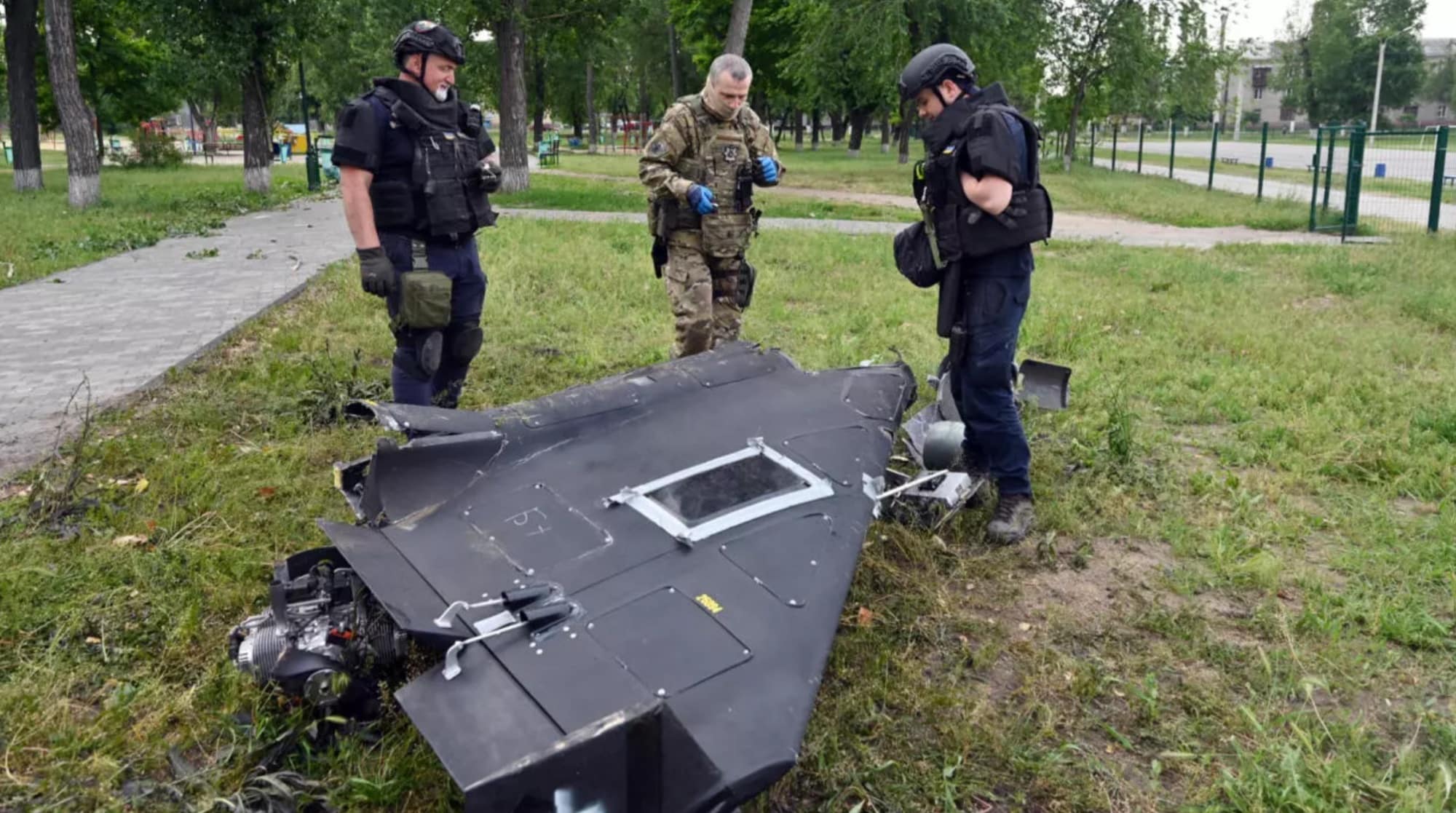Russia adds remote control to Shahed drones, accelerating jet-powered upgrades

Russia is rapidly modifying Iranian-designed Shahed attack drones with onboard cameras, modem antennas, and jet engines to enable remote piloting at higher speeds, according to a UNITED24-sourced report published by Defence Blog, signaling a major escalation aimed at overwhelming Ukraine’s air defenses and striking dynamic targets in real time. Source: UNITED24 via Defence Blog.
Mass production surge
The report states Russia has moved to mass production levels for Shahed-type drones, already producing over 200 per day with plans to reach 1,000 daily, enabling unprecedented saturation strikes across Ukrainian cities and infrastructure. Launch volumes reportedly spiked over three summer months to 15,933 Shaheds, with 6,394 in July, 5,412 in June, and just over 4,100 in August, reflecting both output growth and tactical adjustments in employment.
Paired missile-drone salvos
Current operations frequently combine 500–700 Shaheds in coordinated waves with cruise and ballistic missiles, a tactic designed to exhaust and penetrate Ukraine’s layered air defense by volume and timing. Such combined salvos increase the probability of leakage even where point defenses are present, complicating allocation of scarce interceptors and mobile gun teams across multiple axes of attack.
Jet engines and higher speeds
UNITED24 highlights the fielding of jet-powered variants that boost Shahed speeds from roughly 170–200 km/h (106–124 mph) to nearly 500 km/h (311 mph), making low-cost intercept options far less effective at typical engagement envelopes. The report also notes warhead sizes nearly doubled last year, further increasing lethality against urban and critical infrastructure targets once drones penetrate the defensive screen.
Remote piloting capability
Photos from recent attacks reportedly show onboard cameras and modem antennas, assessed as evidence of new remote-control modes supplementing preprogrammed routes for mid-flight retasking, evasive routing, and target refinement. With real-time monitoring and control, operators could redirect Shaheds from fixed sites to time-sensitive targets like vehicles, artillery, or helicopters, expanding mission profiles beyond static coordinates.
Ukrainian influence and adaptation
The report draws a parallel to Ukraine’s 2024 “Palianytsia” rocket drone concept—jet-powered and faster than conventional platforms—suggesting Moscow has adapted similar performance attributes into its Shahed line. This mirrors a broader pattern described by Kyiv of rapid technological imitation, compressing development cycles by iterating on adversary innovations observed in combat.
Air defense pressure points
At near-500 km/h speeds and altered flight profiles, mobile fire teams with heavy machine guns lose engagement windows, while inexpensive surface-to-air missile stocks remain limited amid sustained bombardment. Ukraine’s prior use of interceptor drones may face reduced effectiveness against jet-powered, remotely piloted Shaheds capable of evasive adjustments and route changes under operator control.
Strategic implications
The UNITED24-sourced assessment frames these upgrades as a “highly dangerous” shift that could define the next phase of the drone war, pairing mass production with continuous capability increments. For NATO and partners, the evolution underscores how cheap, scalable platforms—enhanced by propulsion upgrades and remote C2—can stress high-cost air defenses through persistent, adaptive attacks.
DroneXL’s Take
If Russia can truly scale to four-figure daily output while fielding jet propulsion and remote piloting, the cost-per-intercept equation may tilt further in favor of saturation tactics, pressing Ukraine to expand layered, cost-effective defenses and electronic warfare options. The claim of 15,933 launches in three months—plus 500–700-drone mixed salvos—warrants continued scrutiny and independent corroboration, but the reported shift to camera- and modem-equipped, operator-steered Shaheds is strategically significant for both fixed and mobile target sets. How quickly can counter-UAS, point defense, and interception drones adapt to higher-speed, retaskable threats—and what mix of kinetic and non-kinetic tools can restore affordability and resilience at scale? Share perspectives in the comments.
Discover more from DroneXL.co
Subscribe to get the latest posts sent to your email.
Check out our Classic Line of T-Shirts, Polos, Hoodies and more in our new store today!

MAKE YOUR VOICE HEARD
Proposed legislation threatens your ability to use drones for fun, work, and safety. The Drone Advocacy Alliance is fighting to ensure your voice is heard in these critical policy discussions.Join us and tell your elected officials to protect your right to fly.
Get your Part 107 Certificate
Pass the Part 107 test and take to the skies with the Pilot Institute. We have helped thousands of people become airplane and commercial drone pilots. Our courses are designed by industry experts to help you pass FAA tests and achieve your dreams.

Copyright © DroneXL.co 2025. All rights reserved. The content, images, and intellectual property on this website are protected by copyright law. Reproduction or distribution of any material without prior written permission from DroneXL.co is strictly prohibited. For permissions and inquiries, please contact us first. DroneXL.co is a proud partner of the Drone Advocacy Alliance. Be sure to check out DroneXL's sister site, EVXL.co, for all the latest news on electric vehicles.
FTC: DroneXL.co is an Amazon Associate and uses affiliate links that can generate income from qualifying purchases. We do not sell, share, rent out, or spam your email.


















